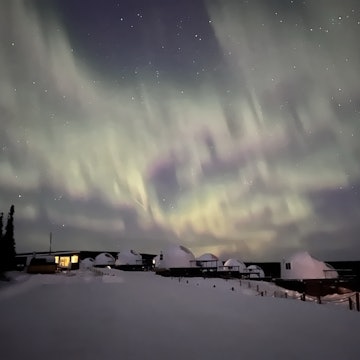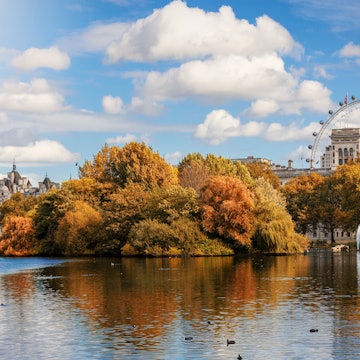
'Bears at 10 o’clock': keeping your nerve with 10,000 brown bears in Tongass National Forest

Nov 14, 2019 • 6 min read

Bear watching at Tongass National Forest is one of the United States' greatest outdoor experiences © Mike MacEacheran / Lonely Planet
It comes naturally to wilderness guide Peter Robertson now — interpreting moving shapes and shadows as he scrutinizes the estuary of Admiralty Island.
As the tide begins to turn, he scans the shore through his binoculars, reading cues from the wildlife and anticipating the drama about to unfold. A skittish black-tailed deer makes a run into the woodland and is swallowed by a thicket of hemlock and spruce. A bald eagle takes flight, soaring above the tree line into a mottled gray sky.

“Bears at 10 o’clock,” Peter says, pointing to two indistinct silhouettes wading across the delta. Then I see them: a coastal brown bear and cub, among the largest mammals on earth, lumbering toward us in slow motion over sea kelp. One hardly rises above the watermark, but the other, as it draws sharply into focus, is unmistakable. “Let’s wait awhile to see what happens,” Peter says, calmly inhaling the earthy morning air. To understand such wilderness, I’m learning, it’s vital to keep your nerve.
A place apart, Alaska veers between two distinct personalities: one of Arctic tundra, mountain plateaus and caribou migrations; the other of dewy rainforests, inaccessible inlets and horseshoe beaches patrolled by bears. This alternative realm — southeast Alaska on the map — is the territory of the Tongass National Forest, a belt of deep green temperate forest bigger in size than Switzerland, Croatia or Costa Rica. It brims with old-growth woodland, rivers stocked with salmon and outrageously pretty fjords where the world’s densest cluster of brown bears congregate in record numbers. There are so many, in fact, they spill onto the coast like syrup from a can.

Enchanting and humbling
I’m here in the middle of the annual salmon spawning season and the bears are well-fed, happy and frequently out in the open. The timing is right for a visit in other ways too; 2020 sees the IMAX release of Into America’s Wild, the follow-up to the genre-defining documentary National Parks Adventure. It’s a showcase for America’s greatest outdoor experiences, including exploring the wilds of Alaska. John Muir, father of America’s National Park System, traveled here across the Gastineau Channel in 1879, yet there is something preposterously humble about this enchanting, elemental corner of the country. Mention the Tongass to many Americans and they have no idea where it is – much less how to pronounce is (hint: it's TONG-us).
Within the forest’s vast 16.7 million acres, nowhere is as far away as you can possibly be — or as wild — as Admiralty Island in the Alexander Archipelago. Out the floatplane window, flying over Stephen’s Passage with a perspective few are lucky enough to see, the plume of a barnacled humpback appears fleetingly below. A scarred mountaintop pokes from swirling mist to peer out over the splintered islands of the Pacific. Seals draw orcas into the bay and our seaplane follows the flight path of a bald eagle, rapidly descending to Pack Creek. Here there are no roads, no buildings, no docks, no services. No tourists. After the departure of our pilot back to Juneau, 27 miles to the northeast, we are totally alone, with no radio, cell service or escape plan.

The quintessential thrill of bears or not, arriving is enough to raise the hair on the back of anyone’s neck. The path from the beach leads along a cream shoreline besieged by mud crabs and mussels to a riverbank, swollen at high tide with spawning salmon. That would be enough, but amid the specter of nature — and the impending arrival of mother and cub — the island is in constant motion. Here and there a stream of water flows like a silver thread and waterfalls rush to the coast.
Before we leave Admiralty Island, Peter tells me how every part of the Tongass National Forest has its own story. On the northern fringe of the wilderness, some 112 miles farther north in Skagway, it’s easy to feel the atmosphere of the Klondike years among the Gold Rush-era train tracks and hazy nostalgia of the clapboard saloons. In Haines, thousands of white-capped eagles rally to welcome the run of salmon every autumn. Farther south, in Ketchikan, near-mythic legends of the forest are brought to life on totem poles that feel both noble and necessary.

A region in peril
Talk of mankind’s relationship with the forest is ever-present. Hunting and fishing remain an obsession in Alaska, yet for the most part, Admiralty Island is off-limits. One issue has the potential to bring everyone in the region together – the Trump administration has proposed overturning a decade-long logging ban in the national forest, and the bear’s embattled habitat is currently racing to the top of the US environmental agenda.
The counter argument to less human involvement, Peter says, is the more people visit in a sustainable way, the more communities will realize the worth of tourism over short term profit. As he puts it, “the natural world cannot be measured in GDP.”
It’s an ongoing debate, but the forest’s intrinsic value lays bare the bones of similar predicaments facing so many countries. The tragedy is we need to be reminded.

Another bear encounter waits at Neets Bay, a one-hour flight south to Ketchikan followed by a floatplane switch deeper into more remote territory. Anticipating my arrival at a little-visited jetty, with mosquito-proof vest and bear-claw necklace, is Joshua Meandenhall, a black bear specialist who encourages us to be mindful of what’s around us. There’s wolf, sitka deer and some ten thousand black bears, he says, before we hike through giant maple and red cedar into another seemingly boundless wilderness of woods. “Watch for Devil’s Foot,” Joshua says, pointing to a plant, one of the Tongass’ less obvious dangers. “It’ll itch, burn and ache. And you’ll wish you were dead.” Utmost respect for the forest is the default mode.
We have a riverfront spot and all is silent, so we wait. Territorially, the bears are solitary creatures, Joshua explains, but here boars and sows are willing to tolerate each other — shoulder-to-shoulder, at times — to feast on pink salmon. A rare moment of gluttony meeting good will.

Following the path of the bear
The longer we sit, the more tension builds in the air. Just as I wonder when the first bear will appear, a meek, glossy-nosed male ghosts in from nowhere into the river. Visibly restless, he submerges his grease-black head into the froth, thrashing left and right before emerging with a salmon snagged under his snout. Soon another emerges closer to where we sit. Shortly, a third arrives, a trophy fish trapped in its jaws. Then and there, the bears, like a magic trick, vanish as if they had never been there at all.
The prospect of these bears and their offspring disappearing for good is real. The Tongass National Forest, millions of years in the making, is at a crossroads. It provides a deep-rooted sanctuary for some of the world’s densest concentrations of bears, and is under threat. Years from now, it may look very different. The reassurance is that, as long as we continue to visit smartly and sustainably, we still have the power to do a lot of good. Travelers of conscience should seize such moments.
Related content
5 Alaska adventures that offer a new perspective
Alternative ways to explore Alaska beyond mega cruise ships
Why Alaska continues to be the Last Frontier
Lonely Planet writer Mike MacEacheran travelled to Tongass National Forest with assistance from Travel Alaska. Lonely Planet contributors do not accept freebies in exchange for positive coverage.















